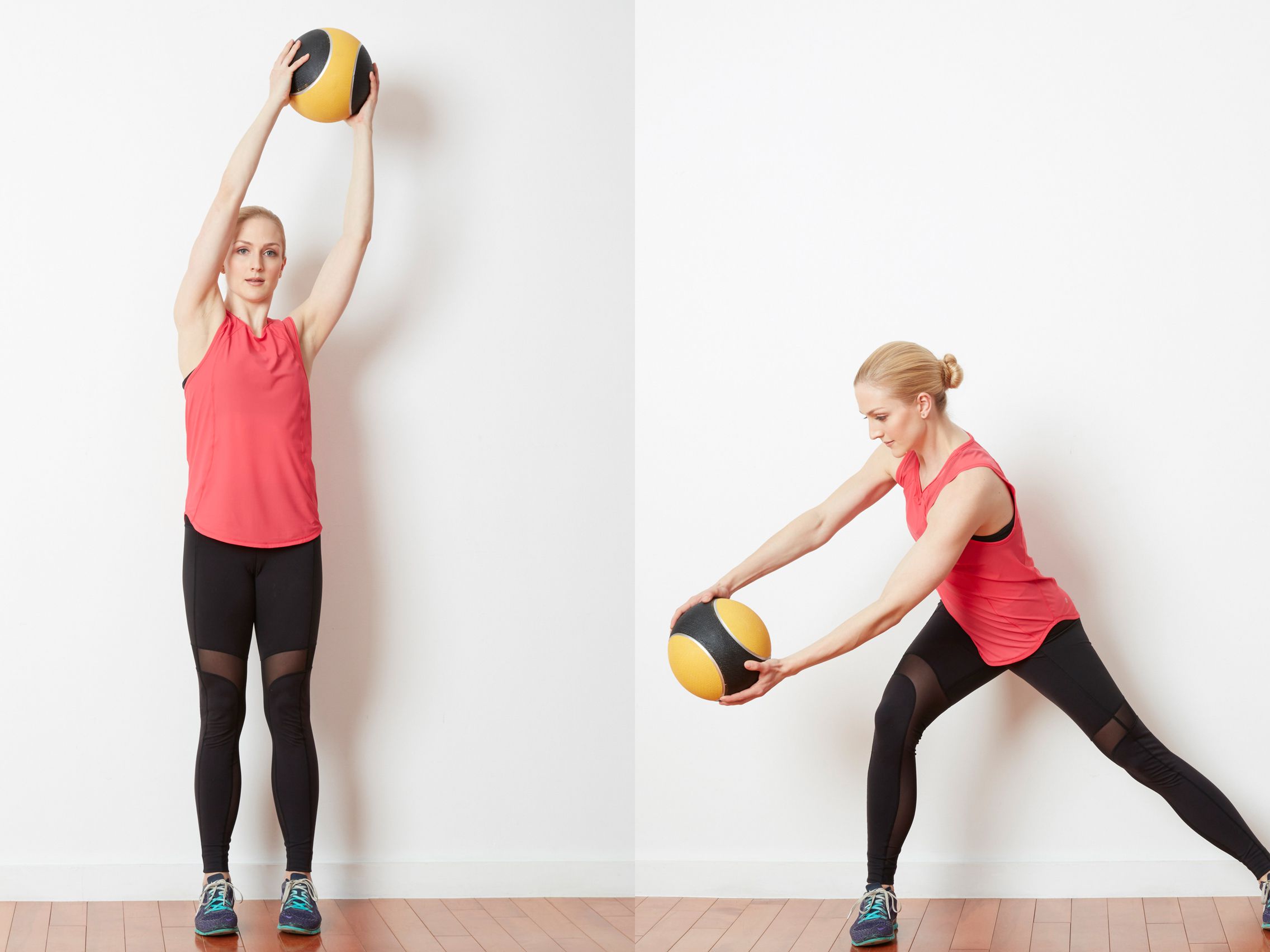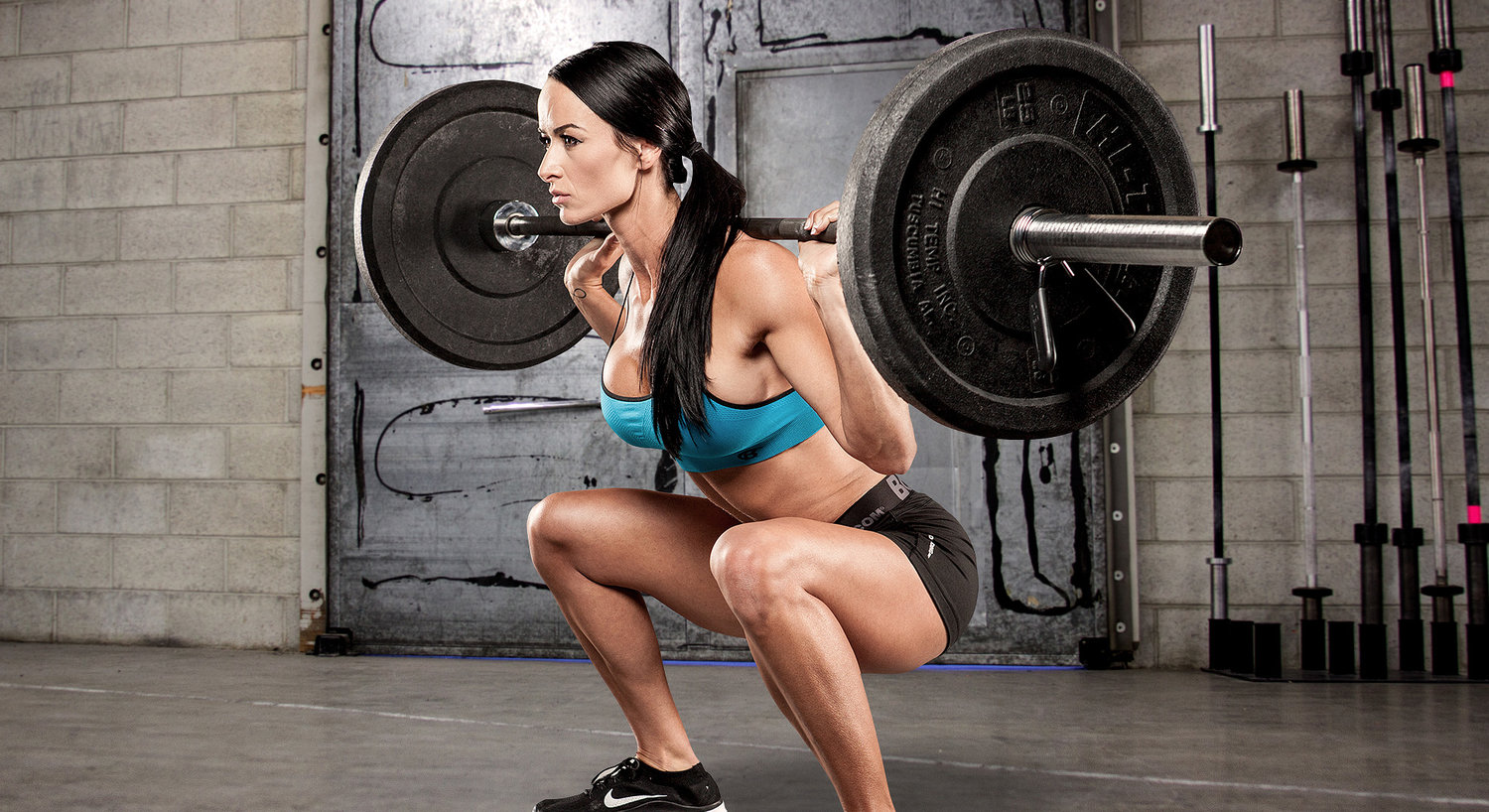Bianca Knight is an American former track and field athlete, competed in the 100 and 200 meters. At the 2012 Summer Olympics Knight won a team event gold medal in the 4×100 metres relay team. According to her “5 exercises that I absolutely love, and I believe are very helpful for the body as a whole” are as follows.

Russian Dead Lifts
This exercise can be done both, single legged and together to add challenge.
To Perform:
- Load a barbell and stand with your feet shoulder width apart, toes forwards, and the barbell running over your shoelaces. For beginners. Keep your torso upright, arms are straight, and the shoulder blades are dropped downwards towards the rear. This will allow you to “lock” the back and minimize strain in the neck.
- Bend down and grab the bar with a slightly wider than shoulder width grip and only slight bend to the knees. Keep your back flat and shoulders over the barbell. Once you have stood up, reset in the above vertical torso positioning.
- Push the hips back while maintaining a setback. This will result in you feeling tension develop in the hamstrings and across the back (lower and middle, especially around the shoulder blades), with the torso moving towards being parallel to the floor.
- Use glutes and hamstrings to stand upwards, keeping the barbell close to the body. If you’re having trouble keeping the barbell close, think of engaging your lats (without pulling through the arms).
- At the top of the movement, contract the upper back, core, and glutes by flexing from the middle of the back to the buttocks (glutes).
- While most athletes will be standing up straight at the top of the movement, avoid overextending and leaning further back than necessary.
- Lower barbell the same way and repeat for 8-10 repetitions.
Wood Chops:

The wood chop is a functional, yet advanced movement that needs to be learned in three stages.
How to Perform:
- Stand in a split-stance position with your left foot forward. Hold a medicine ball in both hands, keeping the ball relatively close to your body. Contract your abdominal / core muscles to stiffen your torso, holding it vertical to the floor. Depress and retract your scapulae (pull your shoulder down and back) without arching your low back.
- Slowly rotate your arms with the medicine ball to the left, to a starting position high and behind you, but do not rotate your head, chest or torso. Your head, chest and hips should always remain facing forward throughout this exercise stage. Keep the medicine ball relatively close to your body.
- Slowly, rotate your arms down and across your body to the right, to an end point where the medicine ball is positioned near your right hip (performing a wood chop movement). Do not rotate your head, chest, torso or hips, and keep them facing forward. Keep the medicine ball relatively close to your body. Hold this end position briefly before returning to your starting position. Repeat the movement in the opposite direction with your opposite leg forward.
- For greater challenge, repeat the same movement, but extend your arms at the elbow and maintain this arm position throughout the wood chop movements. This longer lever increases the loading on the spine, requiring the core muscles to work harder
- You can add greater challenge to this exercise by increasing the degree of rotation. Repeat. Engage your abdominal / core muscles throughout this exercise to stabilize and protect your spine.
Russian Twists:
It’s a popular exercise among athletes since it helps with twisting movements and allows you to quickly change direction.
How to Perform:
- Sit on your sit bones as you lift your feet from the floor, keeping your knees bent.
- Elongate and straighten your spine at a 45-degree angle from the floor, creating a V shape with your torso and thighs.
- Reach your arms straight out in front, interlacing your fingers or clasping your hands together.
- Use your abdominals to twist to the right, then back to center, and then to the left.
- This is 1 repetition. Do 2 to 3 sets of 8 to 16 repetitions.
Barbell Squats:

A more intense version of squats, requiring more work from the largest muscles in the body, the glutes.
How to do It:
- Stand with feet hip- or shoulder-width apart.
- Place the barbell just above the shoulders on the trapezius muscles (i.e., the ‘meaty’ part of the shoulders).
- Bend the knees and lower into a squat. Stop when your knees are at 90-degree angles or before you lose the natural arch of your back.
- Contract the glutes and legs while stabilizing your body with a strong torso.
- Slowly stand back up without locking the knees and repeat for 1-3 sets of 10-16 repetitions.
- Take care when doing this exercise for the first time. Start with a light weight you can easily handle and practice getting your form perfect before moving on to heavier barbells.
Dumbbell Snatches:
A valuable addition to your training routine that can help build explosive full body power and strength.
How to Perform:
- Place a dumbbell on the floor between your feet. Position your feet slightly wider than shoulder-distance apart.
- Roll your shoulders back and downward, pulling your shoulder blades down toward the center of your spine (think: “proud chest”). Press your hips back while keeping a long spine—your head spine and pelvis should maintain alignment as you hinge at the hips. Bend your knees as needed so that you can reach the dumbbell. Your chest and shoulders should be level with the floor and remain facing forward.
- Grasp the dumbbell with one hand, breathe into your belly, and engage your core. Keep your shoulders driving down and back and lock in your long spine position. Allow your free arm to hang at your side.
- Powerfully extend your knees, hips, and ankles, drawing the dumbbell up off the floor and close to your body as you come up. The movement should be powered by your lower body, not your shoulders. Your feet may or may not rise off the floor for a moment.
- Shrug the shoulder that’s holding the weight, driving your elbow up high and backward. The dumbbell should travel in a straight line up in front of you. Think about pulling your whole body under the weight as it rises.
- When it reaches its highest point (above shoulder level), turn your elbow under the dumbbell. Catch the weight overhead with arm extended as it continues upward.
- Finish in a quarter-squat position, which will allow you to decelerate safely. Then extend your legs to stand tall. Carefully lower the dumbbell back to the floor as you squat back down to set up for the next rep.
- Perform 2–3 sets of 3–5 reps.
Bianca further adds “These are just exercises that I feel make me feel more fluid afterwards, and they involve my entire body.”
For complete interview of the former track and field athlete log on to https://www.womenfitness.net/bianca-knight/
Disclaimer
The Content is not intended to be a substitute for professional medical advice, diagnosis, or treatment. Always seek the advice of your physician or other qualified health provider with any questions you may have regarding a medical condition.